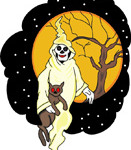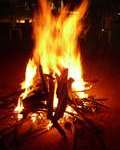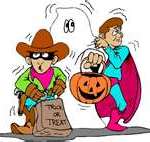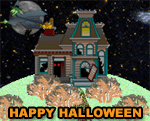 Take a moment to day to remember victims of the 2001 September 11 attacks, often referred to as 9/11 (pronounced nine-eleven) On this day, hijackers intentionally crashed two airplanes in to the World Trade Center in New York City causing them to collapse. Hijackers crashed a third airliner into the Pentagon in Arlington, Virginia, just outside of Washington, D.C. The fourth plane crashed into a field in rural Pennsylvania, after some of its passengers and flight crew attempted to retake control of the plane.
Take a moment to day to remember victims of the 2001 September 11 attacks, often referred to as 9/11 (pronounced nine-eleven) On this day, hijackers intentionally crashed two airplanes in to the World Trade Center in New York City causing them to collapse. Hijackers crashed a third airliner into the Pentagon in Arlington, Virginia, just outside of Washington, D.C. The fourth plane crashed into a field in rural Pennsylvania, after some of its passengers and flight crew attempted to retake control of the plane.
Tag Archives: history
September 5 – Labor Day
 Labor Day is the first Monday in September and was first celebrated in the United States on September 5, 1882 as a trade union holiday. Now Labor Day is seen as the end of summer and the beginning of school for many students. The day is often celebrated with picnics, sporting events and reunions.
Labor Day is the first Monday in September and was first celebrated in the United States on September 5, 1882 as a trade union holiday. Now Labor Day is seen as the end of summer and the beginning of school for many students. The day is often celebrated with picnics, sporting events and reunions.
May 30- Memorial Day
 Memorial Day started in 1868 after the Civil War ended. Dead soldiers from both the north and the south were honored as a way to try to heal the nation. Now all past soldiers are honored. It is also a day that is considered to be the start of the summer season. Many people celebrate with a cook-out or even a trip to the beach. Many towns have a Memorial Day parade – this would be fun to watch, or even to march in.
Memorial Day started in 1868 after the Civil War ended. Dead soldiers from both the north and the south were honored as a way to try to heal the nation. Now all past soldiers are honored. It is also a day that is considered to be the start of the summer season. Many people celebrate with a cook-out or even a trip to the beach. Many towns have a Memorial Day parade – this would be fun to watch, or even to march in.
May 14-Lewis and Clark Expedition started
 In 1804 Lewis and Clark started on an expedition from St. Louis to the Pacific Ocean. They traveled eight thousand miles by foot, boat, wagon, and horse discovering parts of the western United States previously unknown to anyone but the Native Americans.
In 1804 Lewis and Clark started on an expedition from St. Louis to the Pacific Ocean. They traveled eight thousand miles by foot, boat, wagon, and horse discovering parts of the western United States previously unknown to anyone but the Native Americans.
Pretend you are going on your own grand discovery trip without the help of modern maps and communication. Think with the children about all the important things to pack. Or go on a short discovery trip in the neighborhood and look for things you may have never noticed before.
Cinco de Mayo
 Cinco de Mayo commemorates the May 5, 1862 Battle of Puebla (Batalla de Puebla) in which Mexican troops defeated Napoleon’s French forces. Cinco de mayo is celebrated more in the United States than in Mexico.
Cinco de Mayo commemorates the May 5, 1862 Battle of Puebla (Batalla de Puebla) in which Mexican troops defeated Napoleon’s French forces. Cinco de mayo is celebrated more in the United States than in Mexico.
Some Halloween History
 Halloween, celebrated each year on October 31, is a mix of ancient Celtic practices, Catholic and Roman religious rituals and European folk traditions that blended together over time to create the holiday we know today. Straddling the line between fall and winter, plenty and paucity and life and death, Halloween is a time of celebration and superstition.
Halloween, celebrated each year on October 31, is a mix of ancient Celtic practices, Catholic and Roman religious rituals and European folk traditions that blended together over time to create the holiday we know today. Straddling the line between fall and winter, plenty and paucity and life and death, Halloween is a time of celebration and superstition.
Halloween has long been thought of as a day when the dead can return to the earth, and ancient Celts would light bonfires and wear costumes to ward off these roaming ghosts. The Celtic holiday of Samhain, the Catholic Hallowmas period of All Saints’ Day and All Souls’ Day and the Roman festival of Feralia all influenced the modern holiday of Halloween.
In the 19th century, Halloween began to lose its religious connotation, becoming a more secular community-based children’s holiday. Although the superstitions and beliefs surrounding Halloween may have evolved over the years, as the days grow shorter and the nights get colder, people can still look forward to parades, costumes and sweet treats to usher in the winter season.
Halloween’s Celtic Origin
The holiday that evolved into Halloween was first celebrated over 2,000 years ago by the Celtic people, who called it Samhain. The Samhain festival served as the New Year for the Celtic People, as their calendars started on 1 November. During Samhain they celebrated the fall harvest and the coming of winter with huge bonfires. In the bonfires they sacrificed crops and animals to the Celtic deities. The Celts also wore animal skins and heads during the Samhain bonfires, which is where the Halloween tradition of costumes likely originated.
the Celtic people, who called it Samhain. The Samhain festival served as the New Year for the Celtic People, as their calendars started on 1 November. During Samhain they celebrated the fall harvest and the coming of winter with huge bonfires. In the bonfires they sacrificed crops and animals to the Celtic deities. The Celts also wore animal skins and heads during the Samhain bonfires, which is where the Halloween tradition of costumes likely originated.
Halloween’s Christian Origin
In the 600’s A.D., 1 November was designated by the Pope to be All Saints Day; a day to celebrate and honor Christian saints and martyrs. It is believed that Pope Boniface IV chose 1 November as All Saints Day to replace the pagan Samhain festival with a church-approved holiday.
All Saints Day became known as “All Hallows Day” due to the Middle English word for it, which was ‘Alholowmesse.’ Therefore, the night before All Hallows Day became known as “All Hallow’s Eve.”
 The church later appointed 2 November as “All Souls’ Day,” a day to honor loved ones who have passed on. During All Souls’ Day parades in England, “soul cakes” were passed out to poor people in return for a promise that they would pray for departed family members. The All Souls’ Day cake giving, along with the tradition of leaving food on one’s doorstep to appease spirits, evolved into trick-or-treating.
The church later appointed 2 November as “All Souls’ Day,” a day to honor loved ones who have passed on. During All Souls’ Day parades in England, “soul cakes” were passed out to poor people in return for a promise that they would pray for departed family members. The All Souls’ Day cake giving, along with the tradition of leaving food on one’s doorstep to appease spirits, evolved into trick-or-treating.
The Tradition of Pumpkin Carving
The Irish Legend of Jack: The idea of pumpkin carving originated in Irish folklore. According to legend, a man named Jack (who was fond of pranks and liquor) tricked the Devil into climbing up a tree. Once the Devil was in the tree Jack drew a cross on the tree truck, trapping him there. This of course made the Devil extremely angry, so when Jack died he was denied by both Heaven (for his pranks and drinking) and by Hell (apparently the Devil doesn’t like jokes).With nowhere to go for the afterlife, legend says that Jack was left to wander through cold darkness alone. The devil tossed him a single burning ember from Hell to light the way, which was then placed in a hollowed-out turnip to last longer. Thus, Jacks Lanterns were born.
cross on the tree truck, trapping him there. This of course made the Devil extremely angry, so when Jack died he was denied by both Heaven (for his pranks and drinking) and by Hell (apparently the Devil doesn’t like jokes).With nowhere to go for the afterlife, legend says that Jack was left to wander through cold darkness alone. The devil tossed him a single burning ember from Hell to light the way, which was then placed in a hollowed-out turnip to last longer. Thus, Jacks Lanterns were born.
From Turnip Lanterns to Spooky Pumpkins: Turnip lanterns eventually turned into pumpkin lanterns in America, where pumpkins grew more bountifully than turnips. And that was the birth of the modern Jack-o-Lantern, a carved pumpkin with an ember inside to light the way.
 Halloween Today… is a purely recreational holiday. It’s a night to get together to enjoy parties, food and fun costumes.
Halloween Today… is a purely recreational holiday. It’s a night to get together to enjoy parties, food and fun costumes.
If you go out trick-or-treating, go in groups, obey all pedestrian rules and check all treats before eating them.
For more information about Halloween costumes and masks, stories to read, games and crafts and other fun things to do, visit www.halloween.com.
